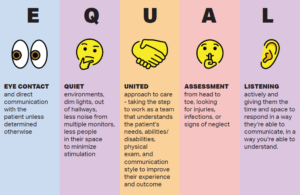
A disability is any condition of the body or mind that makes it more difficult for the person with the condition to do certain activities and interact with the world around them.1 This includes impairments or difficulty with: vision; movement, processing, or thinking and remembering; verbal or non-verbal communication; mental health; hearing; or relationships. People often compartmentalize others based on their abilities and disabilities, but these patients are the opposite; instead, their range of ability should be viewed on a spectrum.
Explore This Issue
ACEP Now: Vol 42 – No 11 – November 2023The care of patients with disabilities in the ED requires more attention, as not much data is available. Krahn, et al., highlight some discrepancies in experiences that may result in ED visits.2 For example, patients that live with disabilities are twice as likely to report sexual assault compared to those without a disability.2 They are one and a half times more likely to be a victim of a nonviolent crime.2 Having a disability alone puts you at a higher risk for unintentional injuries, more than the impact of your age, gender identity, racial background, or education level.2 There have been calls to implement educational resources for emergency medicine residents, but there have not been any tools to better manage these patients.3 The need for this type of investigation was further highlighted in an article by York, et al.—an extensive review of the care these patients receive and how it can be improved.4
This new approach to caring for folks with disabilities uses the concept of EQUALity, which stands for Eye contact, Quiet environment, United approach, Assessment from head to toe, and Listening actively (See Figure 1). The hope is that this model will be an easy reference tool for providers best to monitor their bias when caring for these patients, a discussion started by Dr. Poffenberger regarding using appropriate language.5 This new mnemonic aims to expand further not only on using inclusive language, but also on improving our physical exam, environment, and comprehensive care. The barriers that these patients experience can result in delayed or missed diagnoses if the providers are not thorough in examinations, history taking, and obtaining collateral information. One case report highlighted an unfortunate outcome from aspiration pneumonia, later found to be due to crayons rather than the expected culprits such as food, secretions, or beverages.6 Some cases may be unavoidable, but it is very important to consider alternative diagnoses.
Pages: 1 2 3 | Single Page



No Responses to “EQUAL: a Straightforward Approach To Caring for Disabled Patients”